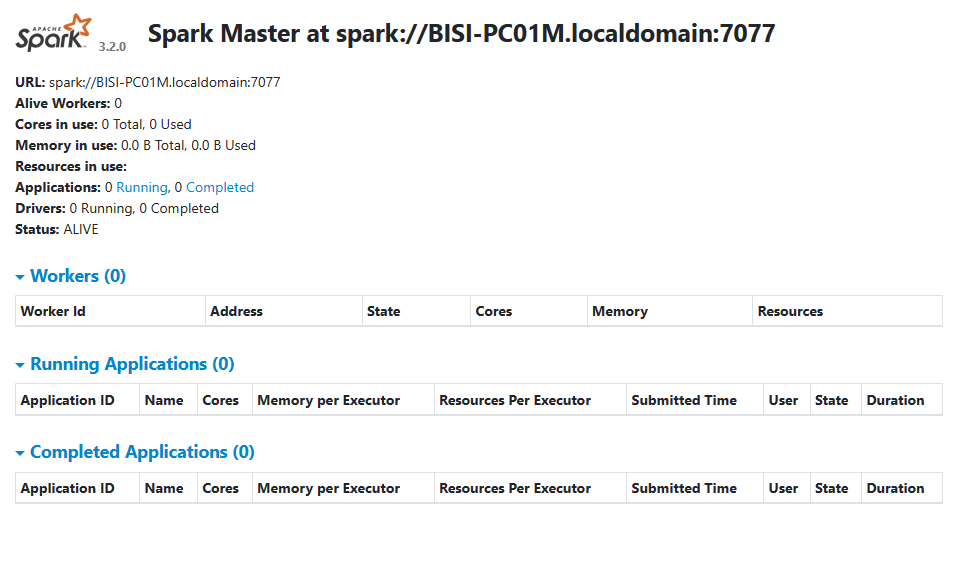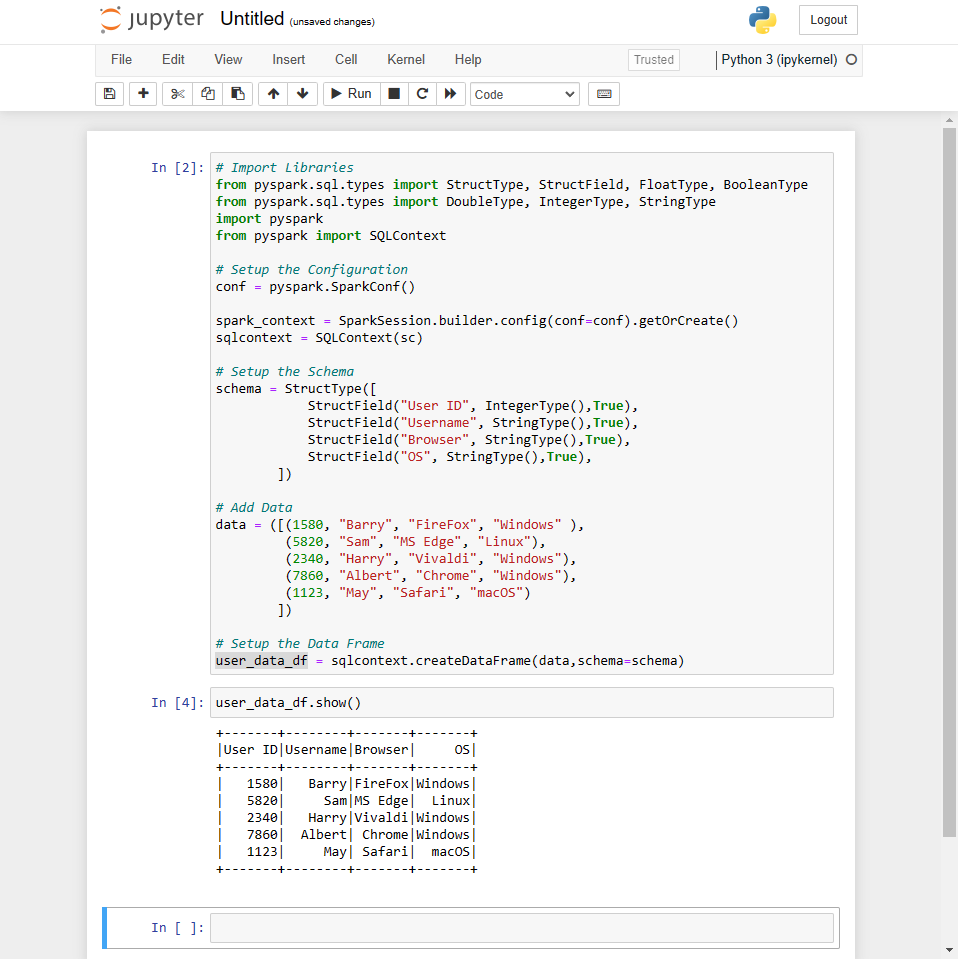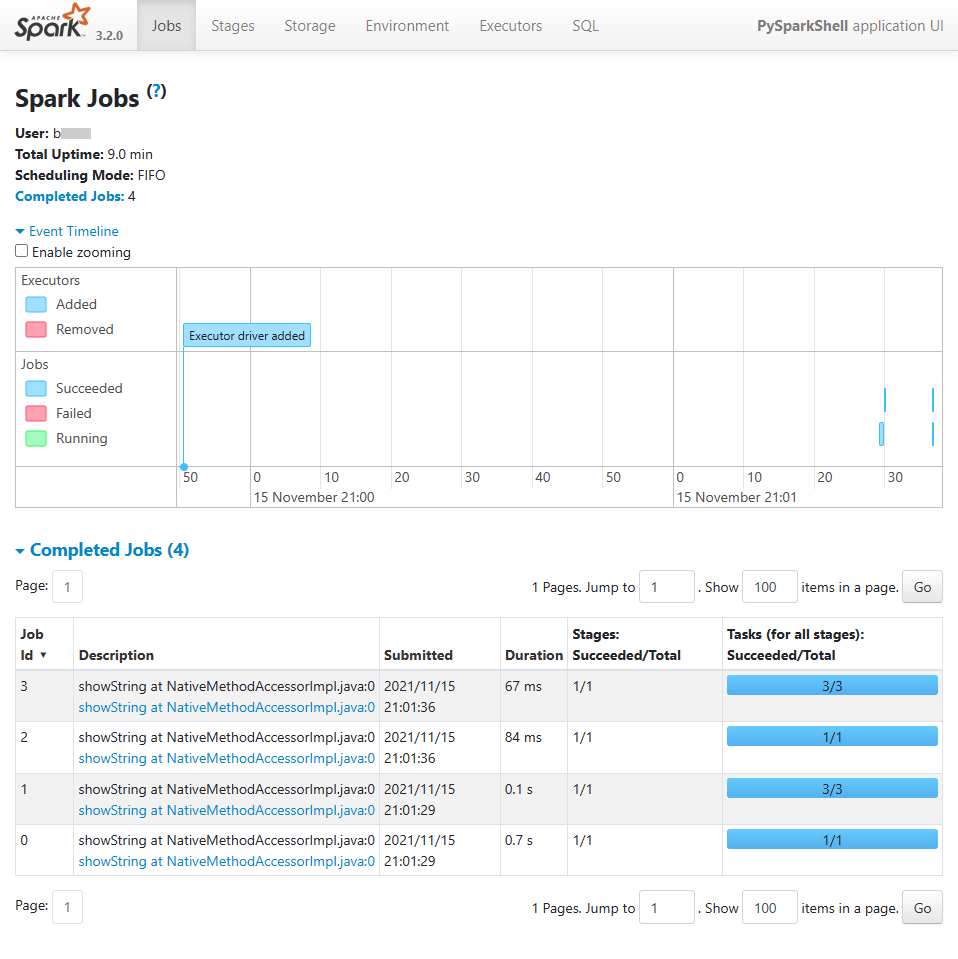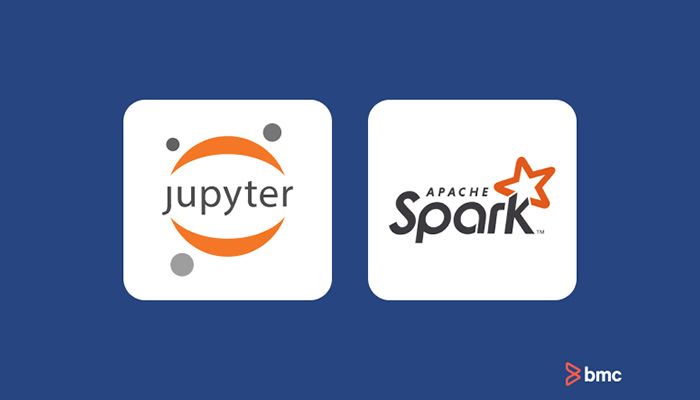Visualize and interact with data using Apache Spark and Jupyter Notebook
Apache Spark is an open-source, fast unified analytics engine developed at UC Berkeley for big data and machine learning. Spark utilizes in-memory caching and optimized query execution to provide a fast and efficient big data processing solution.
Moreover, Spark can easily support multiple workloads ranging from batch processing, interactive querying, real-time analytics to machine learning and graph processing. All these capabilities have led to Spark becoming a leading data analytics tool.
From a developer perspective, one of the best attributes of Spark is its support for multiple languages. Unlike many other platforms with limited options or requiring users to learn a platform-specific language, Spark supports all leading data analytics languages such as R, SQL, Python, Scala, and Java. Spark offers developers the freedom to select a language they are familiar with and easily utilize any tools and services supported for that language when developing.
When considering Python, Jupyter Notebooks is one of the most popular tools available for a developer. Yet, how can we make a Jupyter Notebook work with Apache Spark? In this post, we will see how to utilize Jupyter, Spark and PySpark to create an Apache Spark installation that can carry out data analytics through your familiar Jupyter Notebook interface.
(This tutorial is part of our Apache Spark Guide. Use the right-hand menu to navigate.)
How Jupyter Notebooks work
Jupyter is an interactive computational environment managed by Jupyter Project and distributed under the modified BSB license. A Notebook is a shareable document that combines both inputs and outputs to a single file. These notebooks can consist of:
- Code
- Mathematical equations
- Narrative text
- Visualizations
- Statistical modeling
- Other rich media
The beauty of a notebook is that it allows developers to develop, visualize, analyze, and add any kind of information to create an easily understandable and shareable single file. This approach is highly useful in data analytics as it allows users to include all the information related to the data within a specific notebook.
Jupyter supports over 40 programming languages and comes in two formats:
- The classic Jupyter notebook
- The JupyterLab
JupyterLab is the next-gen notebook interface that further enhances the functionality of Jupyter to create a more flexible tool that can be used to support any workflow from data science to machine learning. Jupyter also supports Big data tools such as Apache Spark for data analytics needs.
(Read our comprehensive intro to Jupyter Notebooks.)
How to connect Jupyter with Apache Spark
If you need to use Spark in Jupyter Notebook, Scala is the ideal language to interact with Apache Spark as it is written in Scala.
However, most developers prefer to use a language they are familiar with, such as Python. Jupyter supports both Scala and Python. However, Python is the more flexible choice in most cases due to its robustness, ease of use, and the availability of libraries like pandas, scikit-learn, and TensorFlow. While projects like almond allow users to add Scala to Jupyter, we will focus on Python in this post.
(See why Python is the language of choice for machine learning.)
PySpark for Apache Spark & Python
Python connects with Apache Spark through PySpark. It allows users to write Spark applications using the Python API and provides the ability to interface with the Resilient Distributed Datasets (RDDs) in Apache Spark. PySpark allows Python to interface with JVM objects using the Py4J library. Furthermore, PySpark supports most Apache Spark features such as Spark SQL, DataFrame, MLib, Spark Core, and Streaming.
Configuring PySpark with Jupyter and Apache Spark
Before configuring PySpark, we need to have Jupyter and Apache Spark installed. In this section, we will cover the simple installation procedures for using Spark in Jupyter Notebook. You can follow this Jupyter Notebooks for Data Analytics guide for detailed instructions on installing Jupiter, and you can follow the official documentation of Spark to set it up in your local environment.
Installing Spark
You will need Java, Scala, and Git as prerequisites for installing Spark. We can install them using the following command:
sudo apt install default-jdk scala git -y
Then, get the latest Apache Spark version, extract the content, and move it to a separate directory using the following commands.
wget https://dlcdn.apache.org/spark/spark-3.2.0/spark-3.2.0-bin-hadoop3.2.tgz tar xf spark-* sudo mv spark-3.2.0-bin-hadoop3.2 /opt/spark
RESULT

Then we can set up the environmental variables by adding them to the shell configuration file (Ex: .bashrc / .zshrc) as shown below.
export SPARK_HOME=/opt/spark export PATH=$PATH:$SPARK_HOME/bin:$SPARK_HOME/sbin export PYSPARK_PYTHON=/usr/bin/python3
The SPARK_HOME variable indicates the Apache Spark installation, and PATH adds the Apache Spark (SPARK_HOME) to the system paths. After that, the PYSPARK_PYTHON variable points to the Python installation.
Finally, run the start-master.sh command to start Apache Spark, and you will be able to confirm the successful installation by visiting http://localhost:8080/
Command

Web UI

Installing Jupyter
Installing Jupyter is a simple and straightforward process. It can be installed directly via Python package manager using the following command:
pip install notebook
Installing PySpark
There’s no need to install PySpark separately as it comes bundled with Spark. However, you also have the option of installing PySpark and the extra dependencies like Spark SQL or Pandas for Spark as a separate installation via the Python package manager.
You can directly launch PySpark by running the following command in the terminal.
pyspark
RESULT:

How to integrate PySpark with Jupyter Notebook
The only requirement to get the Jupyter Notebook reference PySpark is to add the following environmental variables in your .bashrc or .zshrc file, which points PySpark to Jupyter.
export PYSPARK_DRIVER_PYTHON='jupyter' export PYSPARK_DRIVER_PYTHON_OPTS='notebook --no-browser --port=8889'
The PYSPARK_DRIVER_PYTHON points to Jupiter, while the PYSPARK_DRIVER_PYTHON_OPTS defines the options to be used when starting the notebook. In this case, it indicates the no-browser option and the port 8889 for the web interface.
With the above variables, your shell file should now include five environment variables required to power this solution.

Now, we can directly launch a Jupyter Notebook instance by running the pyspark command in the terminal.

Important note: Always make sure to refresh the terminal environment; otherwise, the newly added environment variables will not be recognized.
Now visit the provided URL, and you are ready to interact with Spark via the Jupyter Notebook.
Testing the Jupyter Notebook with PySpark
Since we have configured the integration by now, the only thing left is to test if all is working fine. So, let’s run a simple Python script that uses Pyspark libraries and create a data frame with a test data set.
Create the data frame:
# Import Libraries
from pyspark.sql.types import StructType, StructField, FloatType, BooleanType
from pyspark.sql.types import DoubleType, IntegerType, StringType
import pyspark
from pyspark import SQLContext
# Setup the Configuration
conf = pyspark.SparkConf()
spark_context = SparkSession.builder.config(conf=conf).getOrCreate()
sqlcontext = SQLContext(sc)
# Setup the Schema
schema = StructType([
StructField("User ID", IntegerType(),True),
StructField("Username", StringType(),True),
StructField("Browser", StringType(),True),
StructField("OS", StringType(),True),
])
# Add Data
data = ([(1580, "Barry", "FireFox", "Windows" ),
(5820, "Sam", "MS Edge", "Linux"),
(2340, "Harry", "Vivaldi", "Windows"),
(7860, "Albert", "Chrome", "Windows"),
(1123, "May", "Safari", "macOS")
])
# Setup the Data Frame
user_data_df = sqlcontext.createDataFrame(data,schema=schema)
Print the data frame:
user_data_df.show()
RESULT:

If we look at the PySpark Web UI, which is accessible via port 4040, we can see the script execution job details as shown below.

The power of using Spark and Jupyter Notebook
Apache Spark is a powerful data analytics and big data tool. PySpark allows users to interact with Apache Spark without having to learn a different language like Scala. The combination of Jupyter Notebooks and Spark provides developers with a powerful and familiar development environment while harnessing the power of Apache Spark.
These postings are my own and do not necessarily represent BMC's position, strategies, or opinion.
See an error or have a suggestion? Please let us know by emailing blogs@bmc.com.





